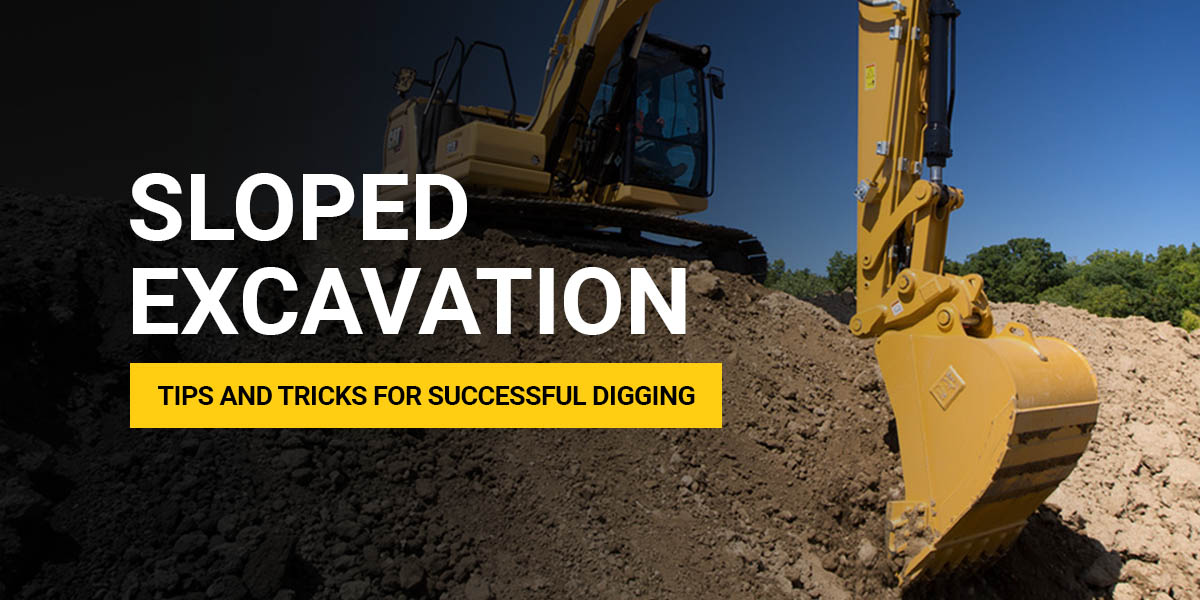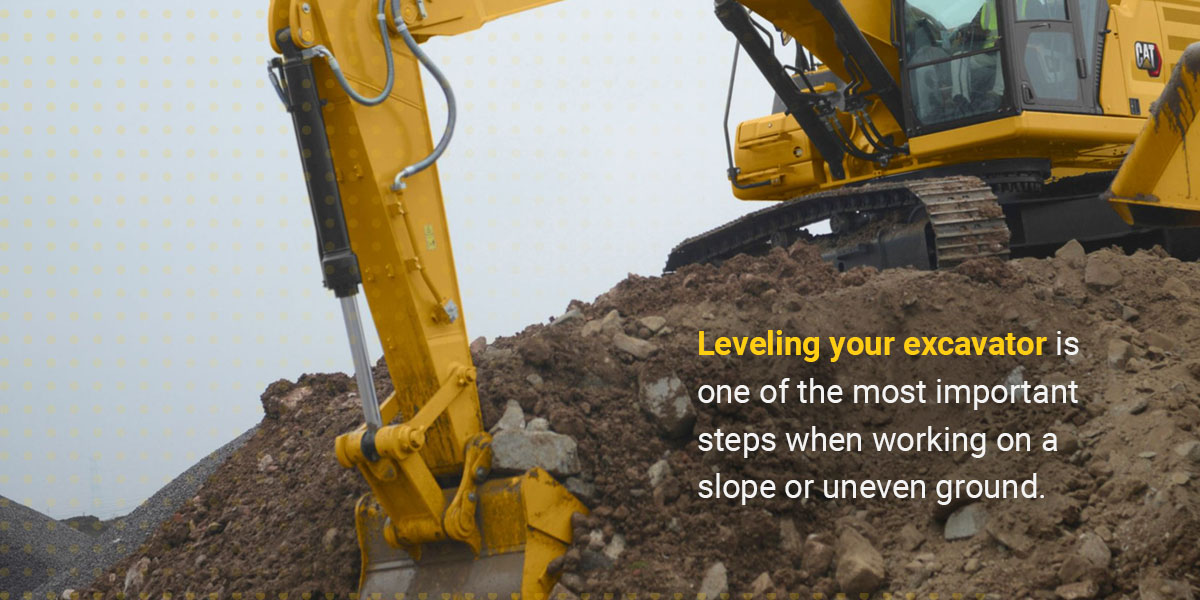
Do you need to excavate a challenging slope or uneven terrain? With today’s modern technology and a few fundamental best practices, you can make digging productive and safe—even on sloped terrain.
Performing excavation work on a sloped or uneven surface can easily shift an excavator’s center of balance, so it’s a great idea to prioritize operator training and review.
In this post, we’ll cover a few basic tips to ensure you see consistent results when excavating sloped surfaces.
For hands-on and classroom training on excavating, grading, and more, check out our operator training classes at Carolina Cat. We offer both operator and technology training to help you get the most out of your construction equipment.
Safe Excavation Tips for Sloped or Uneven Terrain
Before you begin each day, here are a few tips and recommendations for working on sloped terrain safely.
1. Evaluate the Terrain
Since sloped terrain can be more challenging for operators, consider the following factors:
- Soil composition: Conduct a soil analysis before each project to ensure equipment will be safe to operate for the project’s duration. Different soils react differently to digging and grading, and moisture content should also be assessed to ensure the slope is safe and navigable.
- Potential hazards for nearby workers: Operating heavy equipment on sloped or uneven terrain can harm individuals working near or below the slope. Ensure the terrain is stable enough to prevent landslides, falling rocks and equipment rollovers.
- Safety concerns for the general public: Especially in high-trafficked areas, determine how much land to rope off for public safety; consider any potential falling debris during operation.
2. Select the Right Excavator Type
Always select an appropriately sized excavator for heavy-duty jobs to reduce the risk of damage and accidents. A tracked excavator with a lower center of gravity is ideal compared to a wheeled excavator, especially on slopes. You can also enhance stability by choosing an excavator with an automatic leveling system.
Consider these equipment specs before excavating on sloped terrain:
- Equipment weight: Larger, heavier excavators generally offer more stability on uneven surfaces and provide more traction on rocky surfaces than small excavators.
- Maximum boom reach: Your excavator’s boom can help you maintain proper weight distribution and balance. A long-reach boom is a good option for sloped terrain because it allows you to handle materials on the hill while your machine remains stable on more even ground.
- Hydraulic capacity and tipping load: An excavator’s hydraulic capacity determines how much weight it can lift at one time; its tipping load, as you’d expect, is the point at which a load’s weight can lift it off the ground or tip over. Before each project, determine the appropriate hydraulic capacity and rated tipping load to avoid accidents and injuries.
- Track width: Select a machine with appropriately sized tracks to maneuver the work area. Wider tracks offer more stability by reducing ground pressure and covering more surface area.
3. Inspect Your Excavator
Regular inspection and maintenance are critical when adding regular strain on a machine, especially if operating on sloped surfaces. Inspect the following components daily and replace damaged or worn parts to ensure your excavator is in safe operating condition:
- Hydraulic hoses
- Cylinders
- Undercarriage
- Attachments
4. Keep the Excavator Level and the Blade Low

Leveling your excavator is one of the most important steps when working on a slope or uneven ground. You should always keep the machine perpendicular to the slope to prevent tipping if the machine starts to slide.
Use the blade or bucket attachment to remove or add material under the tracks to create a level platform for increased stability. You can also use the blade to brace your excavator against a slope; always keep the blade low to the ground while excavating to maintain proper weight distribution.
5. Maintain Adequate Track Tension
Your machine’s tracks require proper tension for stability on sloped surfaces. Loose tracks can derail your machine, while over-tightening can cause wear and decrease stability.
Refer to the manufacturer’s recommended track tension in the operator’s manual for each machine.
6. Work in Smaller Increments
If removing large loads of material at once is unsafe on a particular slope, you can work in smaller increments. Excavating a smaller volume of material can reduce the potential of overloading and make it easier to control the bucket.
7. Try the Benching Method
What’s called the benching excavation method is a technique to provide stability for the machine and prevent slopes from caving in. With this method, operators excavate a series of benches or levels — each level or step provides a stable platform for safer operation.
Different types of soils have different benching guidelines, so consult with an engineer if needed.
Determine Maximum Slope Angles by Soil Type
To excavate safely, you need to verify that the slope does not exceed a specific angle, which correlates with the soil type on the slope. For example, you can excavate slopes less than 20 feet deep if they meet the right slope degree based on the following soil types:
- Type C soil: Terrain must have a 34-degree or lower slope for safe excavation if you’re working with type C soil.
- Type B soil: A slope with type B soil can be at a 45-degree gradient or lower for safe excavation.
- Type A soil: If you’re working with type A soil, ensure the slope is 53 degrees or lower.
- Stable rock: Stable rock with a 90-degree gradient can still be safe for excavation if you practice caution.
Use Cat® Equipment to Excavate Uneven Terrain Safely
Browse Carolina Cat’s line of high-quality Cat excavators before your next project on uneven or sloped terrain. Since 1926, we’ve provided high-quality, reliable equipment throughout Western North Carolina and would happily answer any questions.
Whether you need to purchase or rent an excavator, our team can help you choose the best option for your project.